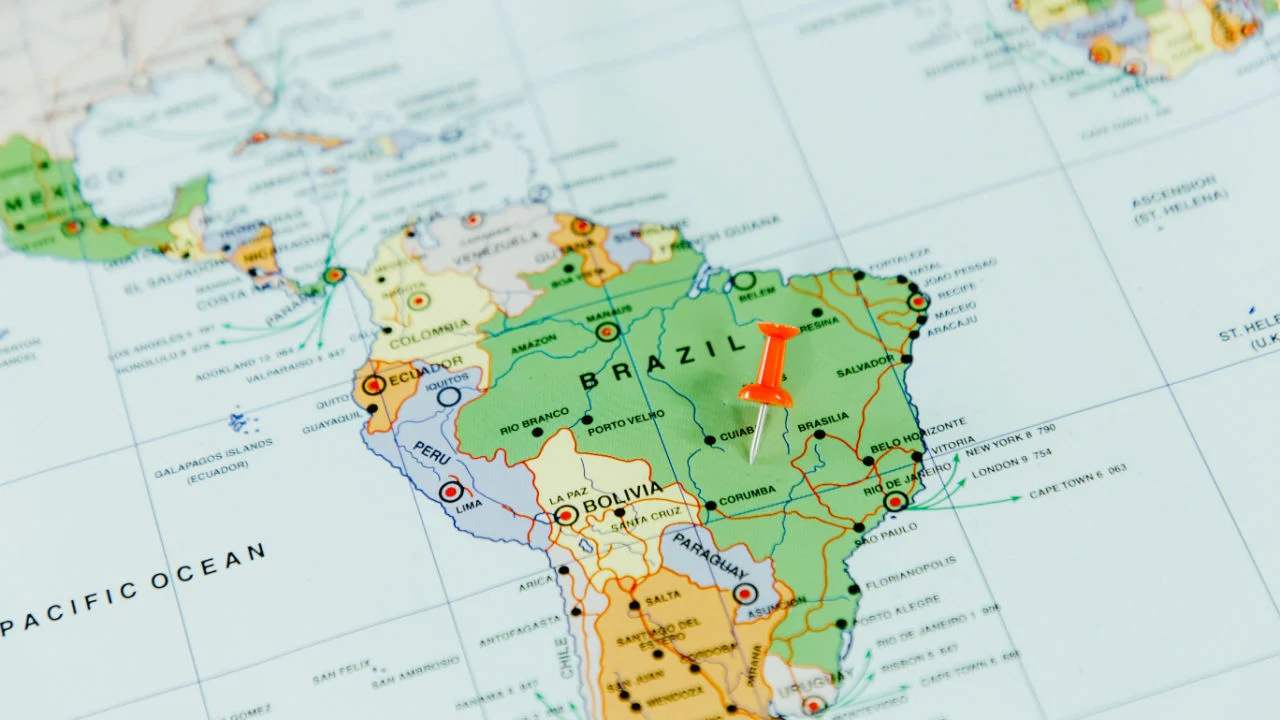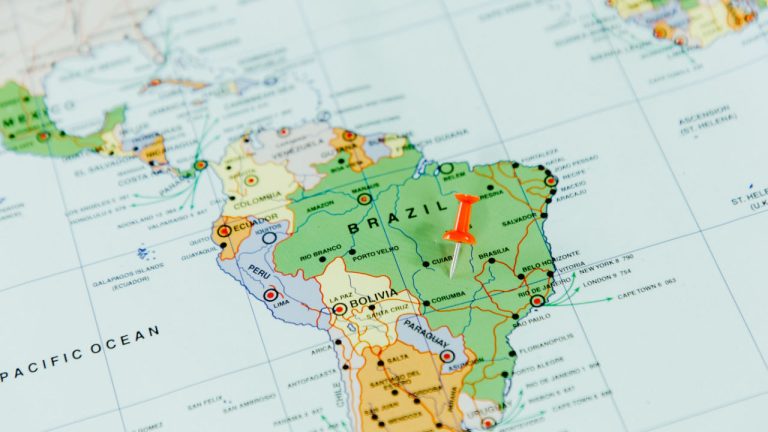 The Venezuelan Attorney General, Tarek William Saab, unveiled the second wave of detentions linked to a crypto money laundering scheme derived from unregistered oil sales paid in different currencies and crypto. The former president of the state-owned oil company PDVSA, Tareck El Aissami, the former Economy Minister Simon Alejandro Zerpa, and entrepreneur Samark Lopez were […]
The Venezuelan Attorney General, Tarek William Saab, unveiled the second wave of detentions linked to a crypto money laundering scheme derived from unregistered oil sales paid in different currencies and crypto. The former president of the state-owned oil company PDVSA, Tareck El Aissami, the former Economy Minister Simon Alejandro Zerpa, and entrepreneur Samark Lopez were […]
The government will spend six additional months to ‘reorganize” the entity, which de-facto stopped its work in March 2023.
Venezuela was one of the first Latin American countries to establish its own crypto oversight body, the National Superintendency of Crypto Assets (Sunacrip). Now, the government says it will take six extra months to ‘reorganize” the entity, which de-facto stopped its work in March 2023.
According to the presidential decree, published on Sept 19, the head of State, Nicolás Maduro, ordered the extension of the period of forced reorganization of Sunacrip for another semester. The period of the new extension officially started on Sept. 17 and will last until March 24, 2024.
Sunacrip was closed in March 2023, when the government announced its reorganization due to the corruption scandal involving its former top management. At the time at least ten people were arrested, including Joselit Ramirez Camacho, who led the crypto department from its inception in 2018. According to Venezuelan prosecutors, Ramirez stole more than $3 million from the state during his time at Sunacrip. He was in charge of overseeing the crypto regulation in the country, as well as the implementation of Venezuelan national cryptocurrency tied to oil reserves, Petro.
Related: Binance excludes Banco de Venezuela from P2P payments
The shutdown of the regulatory body led to chaos in the Venezuelan crypto industry, firmly tied to the state, which has been using digital assets to evade the U.S. financial sanctions — crypto mining facilities in several states were shut down, and some crypto exchanges were ordered to cease operations.
Sunacrip was established by the Venezuelan government in 2018 to inspect the entirety of crypto-related commercial activities in the country and the “creation, emission, transfer, commercialization and exchange” of all crypto actives.
In 2018, the country launched the oil-backed cryptocurrency Petro. By the summer of 2023, there were reports that the government planned to liquidate the currency, however, its official webpage is still functioning at time of publication.

Banco de Venezuela, one of the largest financial institutions in the country, was acquired by the sanctioned government in 2009.
The world's largest crypto exchange Binance has removed Banco de Venezuela as a payment method on its peer-to-peer (P2P) trading service. This follows similar moves with sanctioned Russian banks last week, and is likely part of efforts to fall in line with international financial sanctions.
According to Venezuelan users, Banco de Venezuela has vanished from the P2P payments options this week, following a series of such removals of Russian banks by Binance. The obvious reason behind this step is the Aug. 24 Wall Street Journal report about the exchange’s participation in circumventing international financial sanctions.
Banco de Venezuela is one of the largest financial institutions in the country — according to the available stats from the end of the 2000s, it held third spot with over 11% share of the local market. In 2009, it was sold to the state by a private holding company, Grupo Santander, for about $1 billion. The sanctions in response to the repression of the 2014 and 2017 protests were imposed on Venezuelan government officials and affiliated institutions by the United States Treasury Department in 2018 and 2019.
Related: Binance leaving Russian market is ‘on the table’
As local media reports, such private Venezuelan banks as Banesco, Banplus, BBVA Provincial, and others, remain on the list of Binance’s P2P platform.
The recent surge in awareness regarding the inclusion of sanctioned banks on crypto P2P payment options came to light last week when the WSJ revealed that Tinkoff Bank and Sberbank were featured as transfer methods on Binance. The same day, Tinkoff and Sberbank were no longer visible on the Binance P2P platform, although the options colored "yellow" and "green," representative of their respective brand colors, remained. On Aug. 25, journalists confirmed that the sanctioned banks had been entirely removed from the list, citing a spokesperson from Binance.
On Aug. 28, two other major crypto exchanges, OKX and ByBit, followed Binance by excluding sanctioned Russian banks from their payment options.
Magazine: Should we ban ransomware payments? It’s an attractive but dangerous idea

The launch announcement followed expansion moves by Bitfinex into El Salvador and Chile through licensing and partnerships, respectively.
Digital asset exchange Bitfinex has launched a peer-to-peer (P2P) trading platform in Venezuela, Argentina and Colombia.
In a June 27 announcement, the crypto exchange said it had started the “Bitfinex P2P” platform allowing users in the South American nations to buy and sell Bitcoin (BTC), Ether (ETH), Tether (USDT), Tether’s euro-pegged stablecoin EURT and Tether Gold (XAUT). Bitfinex chief technology officer Paolo Ardoino suggested the expansion into the three countries was part of the firm’s efforts to promote digital asset-related financial services in Latin America.
Something BIG is happening! #BitfinexP2P is redefining P2P trading, driving economic growth, and promoting financial inclusivity in LATAM.
— Bitfinex (@bitfinex) June 27, 2023
Learn more: https://t.co/xHloxLnbTh pic.twitter.com/gw2Y9X4CfP
Related: Peer-to-peer crypto exchanges struggle to navigate shifting legal landscape
The launch announcement followed Bitfinex’s El Salvador arm receiving a digital asset service provider license from the country’s National Digital Asset Commission in April. The exchange also partnered with Chile-based crypto platform OrionX in May, aiming to support local education programs and financial literacy.
P2P crypto exchange LocalBitcoins, which provided services to many residents of Latin America, shuttered its operations in February after more than 10 years. Paxful, another platform popular in the region, suspended operations in April but announced in May it was back online.
Magazine: Cryptocurrency trading addiction: What to look out for and how it is treated

Bitcoin price strength continues into a weekly close that analysis says should stay above $30,000.
Bitcoin (BTC) tapped $31,000 for a third time this year on June 25 as the weekly close promised volatility.

Data from Cointelegraph Markets Pro and TradingView showed BTC price movements focusing on yearly highs.
BTC price remained strong over the weekend as attention focused on geopolitical events in Russia and surrounding states.
With tensions lessening on the day, curiosity over markets’ reactions at the June 26 open remained, with the weekly candle close — already a classic source of volatility — coming first.
In a recent analysis, popular trader Rekt Capital put the “most bullish scenario” for the weekly close above the pivotal $30,000 mark.
#BTC has broken the multi-month downtrend (blue)
— Rekt Capital (@rektcapital) June 22, 2023
But if $BTC performs a Weekly Close like this - a new downtrend may form (black)
This could be the beginning of a new pattern
Lots can change before July
Most bullish scenario -> Weekly Close above ~$30,000#Crypto #Bitcoin pic.twitter.com/i9rdXCdymb
“BTC in mid-April rejected from $30,000 resistance. Let’s see if $BTC can turn $30,000 into support,” a further post added over the weekend.
Fellow trader Crypto Tony stayed hopeful for a trip to $32,000 next, should Bitcoin successfully consolidate near $31,000.
$BTC / $USD - Update
— Crypto Tony (@CryptoTony__) June 25, 2023
If Bitcoin can consolidate around these highs at $31,000, then a burst up to $32,000 will be no problem
I believe in the bulls pic.twitter.com/lOl7AQ6RIl
A slightly less confident Michaël van de Poppe, founder and CEO of trading firm Eight, called into question bulls’ ability to keep upside momentum going.
“Bitcoin made a nice high, through which it swept the yearly high,” he told Twitter followers.
“I’m unsure whether we’ll continue running from here, but during uptrends you’ll most likely see price continuing to run rather than have deep corrections. If we have a correction, $28,500 I buy.”
Van de Poppe repeated a popular downside target among market participants eager to “buy the dip” below $30,000.

Despite the cool-off in volatility against the U.S. dollar, Bitcoin did manage to set new records in three countries this week.
Related: Bitcoin ‘parabolic advance’ means BTC price all-time high in 2023 — Trader
In Argentina, Venezuela and Lebanon, BTC hit its highest-ever levels against the local currency.
For those countries, that trend has continued throughout 2023 as inflation and macroeconomic policy choices quickly erode purchasing power.
In Turkey, where the lira plunged to new lows against the dollar, BTC/TRY neared the area of its blow-off top from December 2021.

This article does not contain investment advice or recommendations. Every investment and trading move involves risk, and readers should conduct their own research when making a decision.
 Welcome to Latam Insights, a compendium of the most relevant crypto and economic development news from Latin America during the last week. In this issue, Bolivia mulls using the Chinese yuan in international trade settlements, inflation reaches 108.8% in Argentina, and Steve Hanke states he can eliminate Venezuela’s inflation in 30 days. Bolivia Mulls Using […]
Welcome to Latam Insights, a compendium of the most relevant crypto and economic development news from Latin America during the last week. In this issue, Bolivia mulls using the Chinese yuan in international trade settlements, inflation reaches 108.8% in Argentina, and Steve Hanke states he can eliminate Venezuela’s inflation in 30 days. Bolivia Mulls Using […]
What started with a comedy club would later become a notorious case of legal loopholes and frustration for the nonfungible token community.
In Venezuela, humor plays an important role, either as a form of protest or a way to make sense of reality.
In November 2021, humor and nonfungible tokens (NFTs) were combined with the launch of the Comedy Monsters Club (CMC) project. The project was led by Roberto Cardoso, better known by his former stage name “Bobby Comedia,” and co-founded with brothers José David Roa and David Roa.
The project was advertised as the only comedy club to use NFT collectibles as membership. However, the hype would quickly turn to confusion for the project’s investors.
Comedy Monsters reached the NFT-curious Latin American audience through the well-known Venezuelan comedians.
Cardoso and his co-founders appeared in publications like Forbes Mexico and on popular shows and comedy podcasts such as Nos Reiremos de Esto and Escuela de Nada.
Listenting to an episode of Escuela de Nada titled “How To Make Money With NFTs,” pseudonymous NFT collector Nairobi first came to learn about the presumptive comedy club. Later, they would decide to join the CMC community and purchase an NFT themselves.
“It’s in that conversation where you can really identify the project’s selling narrative,” Nairobi explained.
During the episode, the hosts interview Comedy Monsters co-founder José David, a self-appointed “NFT expert.” In the conversation, José David uses his own example of being an early investor in Bored Ape Yacht Club, reportedly earning over $300,000 from selling one of his NFTs.
His get-rich-quick story is followed by the mantra “do your own research,” often used to imply that any previous statements made by so-called experts shouldn’t be taken as financial advice.
“For someone who is new to the NFT ecosystem, this can lead to false expectations,” Nairobi said.
CMC officially launched in November 2021 with an offering of 10,100 NFTs. The starting price for each was 0.1 Ether (ETH), worth between $400 and $500 at the time of the sale. The monsters wouldn’t be revealed to their owners until all the NFTs were sold.
Cardoso told Cointelegraph that the comedy club’s purpose was “to deliver as many experiential, material and economic benefits” to its members as possible.
However, beyond the novelty of the project’s proposal, it was never clear how CMC would maintain or increase the value of its NFTs. In a small section on its website consisting of only three sentences, the creators explain the tokenomics behind the project.
“The rarer it [the NFT] is, the better benefits it will possibly have and the greater value it will surely have,” it reads.
The period after the initial launch of an NFT collection can be critical to determining the project’s success. The value of the tokens will depend on the public’s continued interest in investing, putting projects under pressure to implement successful marketing strategies.
The CMC founders were so concerned about the sale of their Monster NFTs that former members reported that the project’s creators pressured the community to help come up with sales strategies to sell them.
“We were practically demanded to come up with marketing strategies. There was also the alleged raffle of a Mutant Ape NFT within the community, under the condition that Comedy Monsters Club sold out in just 15 days,” Nairobi recalled.
The pressure on the community was stacked on top of another key point: An inadequate execution of the club’s roadmap.
The CMC roadmap had five stages: the production of a podcast, a comedy festival exclusive to holders, games and raffle prizes in ETH, a foundation and a United States branch.
Despite posts on social media showcasing 2022 as a successful year for CMC, its community shared a very different experience. The project launched a podcast, but stopped after less than 20 episodes. CMC founders organized events, but they weren’t exclusive, and there were limited tickets for NFT holders. Even the raffles ended up switching from ETH prizes to giving out CMC NFTs instead.
The project never reached its goal of a total sell-out. According to its smart contract, there are 2,320 holders, owning 7,660 monsters in total.
Cardoso said that a significant but unspecified number of NFTs were used in publicity stunts and giveaways, and he blamed the 2022 crypto market crash for the project’s failure to sell out.
A rough approximation of the comedy club’s earnings shows that it could have made as much as $2 million to $3 million, based on estimates of the value of the sold tokens at the time of CMC’s launch.
Today, the CMC smart contract shows a balance of 0 ETH, and there’s only a little over $300 in ETH left in the project’s main wallet.
The community never knew for sure how the funds were spent on the project’s roadmap or how much was taken by Cardozo and the Roa brothers, making the case for a possible soft rug-pull.
Suspicion about the project’s trustworthiness arose in early March 2022 when holders began to complain about the founders’ neglect of the community.
According to the testimony of several former CMC holders, concerns began when David, the project’s appointed CEO, left the Discord group, followed shortly by his brother, José David. The community also reported that CMC holders who raised questions on Telegram chats were being blocked.
Cardoso told Cointelegraph that he actually signed a separation agreement with his former co-founders on Nov. 9, 2022, leaving him at the head of the project as founder and CEO. Specific details of this agreement remained private.
In November, CMC holders and community members also noted a lack of transparency surrounding the usage of funds.
One pseudonymous CMC holder, RAMXx, proceeded to track the project’s funds on the blockchain. The public record revealed that 411.9 ETH — valued at over $1.18 million using ETH’s average price between November 2021 and June 2022 — had been extracted from the project and swapped using different cryptocurrency exchanges.

Venezuelan Twitter user Victor Noguera also shared more information by showing his process tracking everything on the blockchain.
His research also found that the money had been divided between three wallets. The contract shows that two wallets received a share of 25% each while a third received 50%, which the community presumed were controlled by the Roa brothers and Cardoso, respectively.
Cardoso confirmed the wallet amounts to Cointelegraph: “All the income from the minting was divided into three wallets. Logically, my previous co-founders and I had access to these wallets to operate the club.”
With these findings, the community confirmed that the project lacked a community wallet, an instrument often used in Web3 communities to allow holders to keep track of invested funds and serving as a treasury for a project’s roadmap.
The lack of a community wallet came as a shock for some CMC NFT holders, whose investments’ floor price is now just 0.015 ETH, or less than $30.
Cardoso confirmed the community findings to Cointelegraph, stating that the Monster NFTs were solely “a membership for a club which includes a roadmap with benefits.”
“The resources or funds belong to those who sell the token, not to the community. There isn’t a social contract that says that the funds belong to the community or a ‘community’ wallet,” he explained.
The conversation about the irregularities of CMC reached social media by December 2022. A community moderator, Alfonzo González, recalled on a Twitter Space that the founders improvised a lot, which combined with a notable lack of transparency and unsustainable strategies to keep up with the roadmap.
In today’s NFT industry, legal protections for users still remain unclear. As the Web3 space relies heavily on communities to create their own rules, users often get involved in projects with a lot of promise but little obligation to their participants.
This can be seen in the phrasing of goals and the clarification of deadlines — or lack thereof — in project roadmaps. If founders don’t provide accountability measures in case they fail to meet the project’s goals and the participants or holders do not demand them, it could result in losses for the community if the project fails.
The only visible promise the Comedy Monsters creators made to their community was a rough roadmap. The project lacked deadlines and specific consequences if it failed to meet its goals. The whole project was based on the utility of the NFTs — providing real-world benefits, including international comedy events and other experiences, like workshops.
According to Maria Londoño, a lawyer and co-founder of the NFT project Disrupt3rs, this ambiguity is what led to serious miscommunication between the founders and the community.
“They made very vague promises, and there were attempts to solidify them. However, there are neither specified, committed parties nor deadlines for the promises. There isn’t any contractual obligation that could be demanded,” she told Cointelegraph.
“Saying things like ‘This will probably go up in value’ could sound like a promise or return on investment through speculation, but it could also be plain ignorance,” Londoño added.
After the social media storm, Comedy Monsters Club continues to be active, offering events and workshops to their holders.
Cardoso said the project would continue despite the damage to the club’s image. “A part of it is to learn and improve,” he said.
Londoño also believes that, in the end, the creators of Comedy Monsters Club underestimated the importance of making explicit rules and expectations for themselves and their holders:
“I believe that both parties (creators and community) were wrong by not setting and demanding clear rules. The community lost money and the creators their reputation. It’s a lose-lose situation due to lack of understanding that the rules of the traditional world still apply in Web3.”
 Welcome to Latam Insights, a compendium of the most relevant crypto and economic development news from Latin America during the last week. In this issue: the Argentine Peso plunges against the U.S. dollar, Venezuela and Russia agree to develop a joint SWIFT alternative, and Bitcoin mining is still paused in Venezuela. Argentine Peso Plunges 10% […]
Welcome to Latam Insights, a compendium of the most relevant crypto and economic development news from Latin America during the last week. In this issue: the Argentine Peso plunges against the U.S. dollar, Venezuela and Russia agree to develop a joint SWIFT alternative, and Bitcoin mining is still paused in Venezuela. Argentine Peso Plunges 10% […] Sergey Lavrov, the Russian foreign minister, started his tour of Latin America on April 17, landing first in Brasilia to hold high-level talks with Brazilian President Luiz Inacio ‘Lula’ da Silva and Brazilian Foreign Minister Mauro Vieira. Lavrov insisted that Russia was building a “multipolar” world, while Vieira rejected the unilateral sanctions enacted against Russia. […]
Sergey Lavrov, the Russian foreign minister, started his tour of Latin America on April 17, landing first in Brasilia to hold high-level talks with Brazilian President Luiz Inacio ‘Lula’ da Silva and Brazilian Foreign Minister Mauro Vieira. Lavrov insisted that Russia was building a “multipolar” world, while Vieira rejected the unilateral sanctions enacted against Russia. […] Welcome to Latam Insights, a compendium of the most relevant crypto and economic development news from Latin America during the last week. In this issue: Inflation in Argentina goes over 100%, El Salvador issues its first digital assets licenses, and the crypto-linked corruption probe in Venezuela is still ongoing. Argentina Registers 104.3% Inflation In March, […]
Welcome to Latam Insights, a compendium of the most relevant crypto and economic development news from Latin America during the last week. In this issue: Inflation in Argentina goes over 100%, El Salvador issues its first digital assets licenses, and the crypto-linked corruption probe in Venezuela is still ongoing. Argentina Registers 104.3% Inflation In March, […]